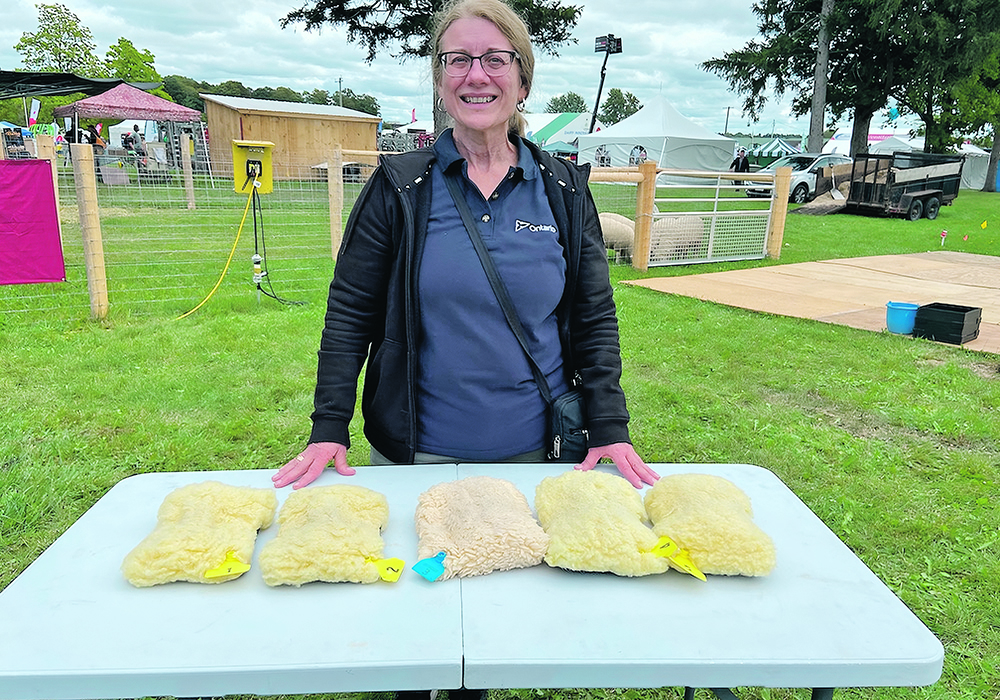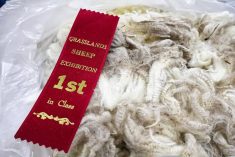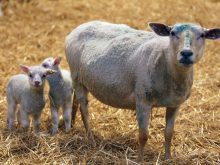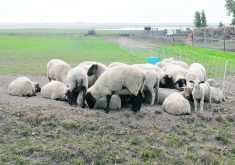Body condition scoring livestock is a human, hands-on process and that means it’s subjective.
Steps can be taken to make sure evaluations are repeatable across many animals, says Delma Kennedy, sheep specialist with the Ontario Ministry of Agriculture, Food and Rural Affairs.
Body condition scoring helps to evaluate the effectiveness of feeding regimens and enables farmers to identify animals that need more attention. Most livestock body condition scoring systems are based on a five-point scale. Animals rated one are the thinnest and those rated five have the most condition. There are many gradients in between, but Kennedy says the five-point scale is the best for humans to interpret.
Read Also

VIDEO: Ag in Motion documentary launches second season
The second season of the the Western Producer’s documentary series about Ag in Motion launched Oct. 8.
She gave presentations on body condition scoring in Livestock Central on each day of Canada’s Outdoor Farm Show held recently in Woodstock, Ont.
“Body condition scoring is the best way for sheep producers to decide how well their nutrition program is going,” she said at the show.
Feed is one of the largest expenses on a sheep farm, so “if they can tweak their feeding program to make it work better to get better production or to reduce where feed is wasted, it can make a huge difference,” says Kennedy.
There are four parts of the production cycle where body condition scoring makes sense:
- At breeding, to see if ewes are in the right body condition to be bred.
- At mid-pregnancy, an important time to check because ewes must be in the best condition possible as they enter late gestation.
- In the lambing pen, which will identify whether ewes came through late gestation with enough condition to feed the lambs.
- At weaning. Did the lactation ration work well, and if not, what should be done to get animals back to breeding condition?
Kennedy arranged five fuzzy pouches on a table during her presentation. They looked like the stuffed animal collection of a child who loves yellow.
However, these were much more complicated than an average teddy bear — custom-created sheep body condition score models made by a taxidermist in Australia.
As a tool, they help farmers understand each of the five points on the scale compared to their experience.
Kennedy says she can body condition score about 90 ewes in a handling chute before she finds her hands can’t distinguish between the different levels.
The mind can be tricked. She uses the example of putting one hand in hot water, one hand in cold water and then both in warm water. To the hand in hot water, the warm water will feel cold, but it will feel hot to the other hand.
Be aware that mental drift can happen, so be prepared to reset, she advised.
“If things start to feel wonky and I’m not clear on what I’m feeling, you have to step back for a minute, reset your brain and start again.”
Looking at drawings and reading descriptions can also help reset the brain.
An efficient handling system usually determines whether sheep producers regularly take body condition scores on their animals. A system that lowers stress for the sheep and the people is the first step in making it a regular practice.
If most ewes aren’t close to a three on the scale at all times, production will be affected, says Kennedy. Fat ewes can bring lambing problems and pregnancy toxemia. Thin ewes have less chance of breeding successfully and can also result in low birth weights.
With a heavy coat of wool at times, it is difficult to visually assess sheep without getting hands on them. Kennedy recommends using the work of body condition scoring by recording data to identify trends and sharing results with the farm’s nutritionist.

















